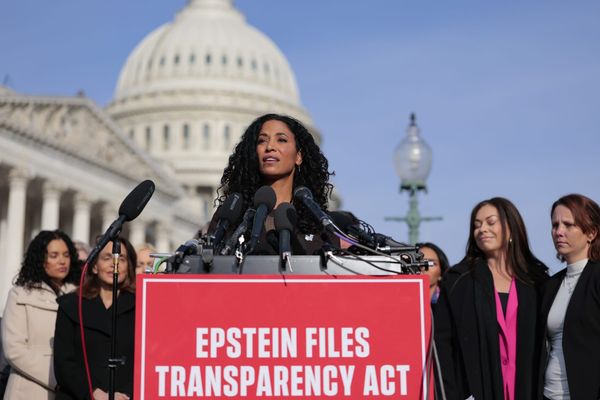
Rachel Reeves is under renewed pressure to spend billions more on affordable housing, after an industry report suggested the government had significantly overestimated how many new homes would be built over the next few years.
The chancellor is being urged by figures inside and outside the government to spend heavily on affordable housing at this month’s spending review, as a report by one of the country’s biggest property consultancies cast doubt on official forecasts.
The findings from Savills suggest the government is further away from hitting its target of building 1.5m new homes than previously admitted. Its findings are likely to aid the arguments of Angela Rayner, the housing secretary, who is at loggerheads with Reeves over how much her department should be given to build new affordable homes.
Kate Henderson, the chief executive of the National Housing Federation (NHF), which commissioned the report, said: “This analysis shows that reaching the OBR’s [Office for Budget Responsibility] forecasts, let alone the government’s targets, will require a generational boost to investment in social and affordable housing.”
Chris Buckle, the residential research director at Savills, added: “The heroic rates of growth forecast by the OBR will not be achieved without further action from the government to support demand – particularly support for housing associations and an ambitious new grant funding programme.”
One government source said funding for affordable homes was proving a sticking point in negotiations over June’s spending review, with Rayner pushing for Reeves to spend much more heavily on it than the previous government did.
The housing department is one of several still battling with the Treasury just days before the spending review, with the chancellor facing fraught negotiations with some of her most high-profile cabinet colleagues. They include Ed Miliband, the energy secretary, who is fighting to protect home insulation funding, and Yvette Cooper, the home secretary, who wants to ringfence the police budget.
The OBR declined to comment.
Labour’s vow to build 1.5m houses over the course of the parliament has been central to its promises on economic growth and tackling the cost of living.
Hitting the target would require 300,000 net new additions to housing supply every year of the parliament – a level that has never been hit before.
Ministers argue that they will be able to stimulate a housing boom by making changes to the planning system that make it far easier for private developers to invest in new schemes.
The deregulation is causing concern among some green groups that say natural habitats are likely to be damaged by the push for more housing, with many builders failing to fulfil their environmental commitments.
Ministers, however, say planning reforms are essential, and have been bolstered by official forecasts from the OBR, which say there are likely to be 1.3m net new homes built over the five years to March 2030. Reeves welcomed that forecast in March, saying it showed the government was within “touching distance” of hitting its target.
However, the findings from Savills suggest ministers are much further from that target than Reeves suggests.
First, the report says the 1.3m forecast applies to the whole of the UK, while the government’s target applies only to England. It also highlights the fact that the OBR’s forecast is for a period until March 2030, nearly a year after the latest possible date for the next election. Taken together, the report estimates the government is actually on track to oversee the building of 1m new homes by the end of the parliament – only two-thirds of the way to its target.
In addition, Savills found the OBR had relied on historically high estimates of private housebuilding to create its forecast. In 2030, for example, the forecast says there are likely to be just over 1.2m private house sales, of which 160,000 will be newly built properties.
This would be far in excess of historical trends, given that transaction volumes throughout the 2010s were closer to 1m, and that sales of new-build properties rarely exceed 10% of the total number of transactions. If overall sales and sales of new properties remain closer to recent trends, it would mean only 100,000 new houses going on sale every year – less than two-thirds of the OBR’s forecast.
The OBR’s forecasts also rely on affordable housebuilding rising in line with the private market, despite the fact that the number of new affordable homes being started has collapsed recently – down 35% in England in 2024 and 90% in London.
The report comes amid a standoff between Reeves and Rayner over how much to spend on affordable housing until the end of the parliament. With less than two weeks to go until the chancellor announces departmental spending limits for the next three years, officials say the two cabinet ministers are yet to reach an agreement on the housing budget.
At the March budget, Reeves announced an extra £2bn for the government’s affordable homes programme in 2026-27. But Rayner is understood to be arguing for more, saying the extra money was billed at the time as a “downpayment” on the government’s housing commitments. She argues that the 1.5m target will be missed without much higher levels of support.
The NHF has calculated that to meet housing need the government must build 90,000 new socially rented homes a year, which if entirely publicly funded would cost the government £11.5bn a year.
The federation is also urging Reeves to guarantee that social rents should go up by 1 percentage point above inflation for the next 10 years – double the length of time the government has proposed.
This would help buttress the finances of the country’s housing associations, 11 of which recently wrote to the housing minister Matthew Pennycook warning of “the worst housing situation in living memory”.
Henderson said: “This certainty of income is vital for housing associations to unlock the private investment needed to build new affordable homes and deliver growth, jobs and improved living standards.”







